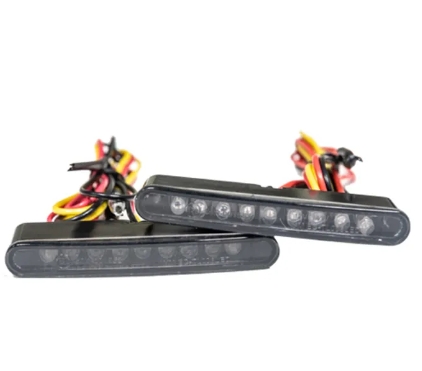A motorcycle headlight is a crucial component of a motorcycle's lighting system. It provides illumination for the rider to see the road ahead and also makes the motorcycle more visible to other road users.
There are different types of motorcycle headlights available, including halogen, LED, and HID (high-intensity discharge) headlights. Each type has its own advantages and disadvantages.
Halogen headlights are the most common type and are relatively inexpensive. They provide a warm, yellowish light and are easy to replace. However, they have a shorter lifespan compared to other types of headlights.
LED headlights are becoming increasingly popular due to their energy efficiency and longer lifespan. They produce a bright, white light and are more durable than halogen headlights. LED headlights also have faster on/off response times, making them safer for night riding.
HID headlights produce a bright, bluish-white light and are known for their high intensity. They provide excellent visibility and are often used in high-performance motorcycles. However, they can be more expensive to replace and may require additional components for proper installation.
Motorcycle headlights are typically housed in a headlight assembly, which also includes other components such as the reflector, lens, and housing. Some motorcycles may have multiple headlights for enhanced visibility.
It is important to regularly check and maintain the motorcycle headlight to ensure optimal performance. This includes cleaning the lens, checking for any damage or cracks, and replacing bulbs as needed. Additionally, adjusting the headlight angle can help improve visibility and prevent blinding other road users.
In many countries, motorcycles are required by law to have a working headlight, both during the day and at night. Some motorcycles also have additional features such as adaptive headlights, which adjust the beam pattern based on the motorcycle's speed and lean angle.
Overall, a properly functioning motorcycle headlight is essential for safe riding, allowing the rider to see and be seen on the road.



